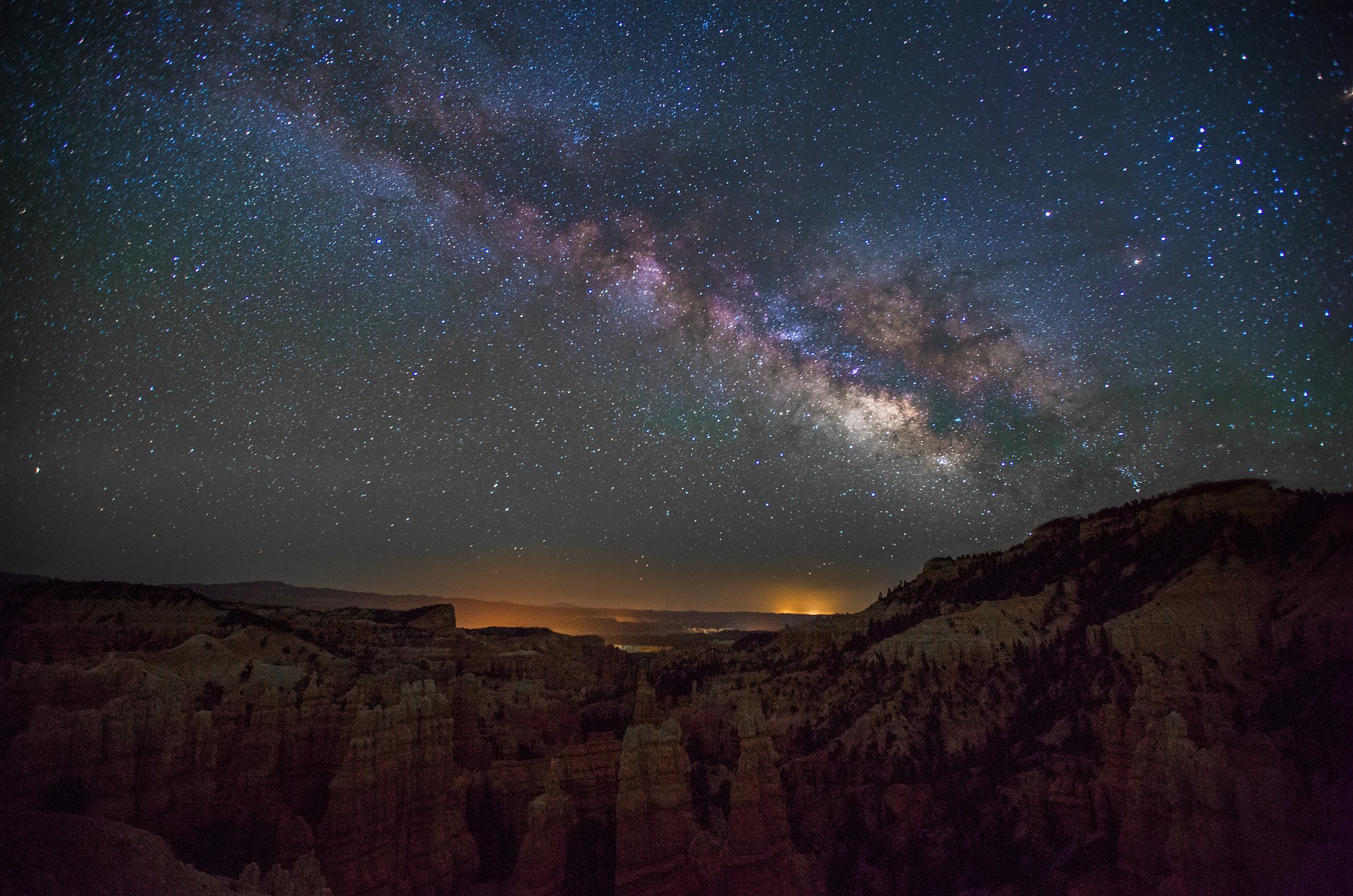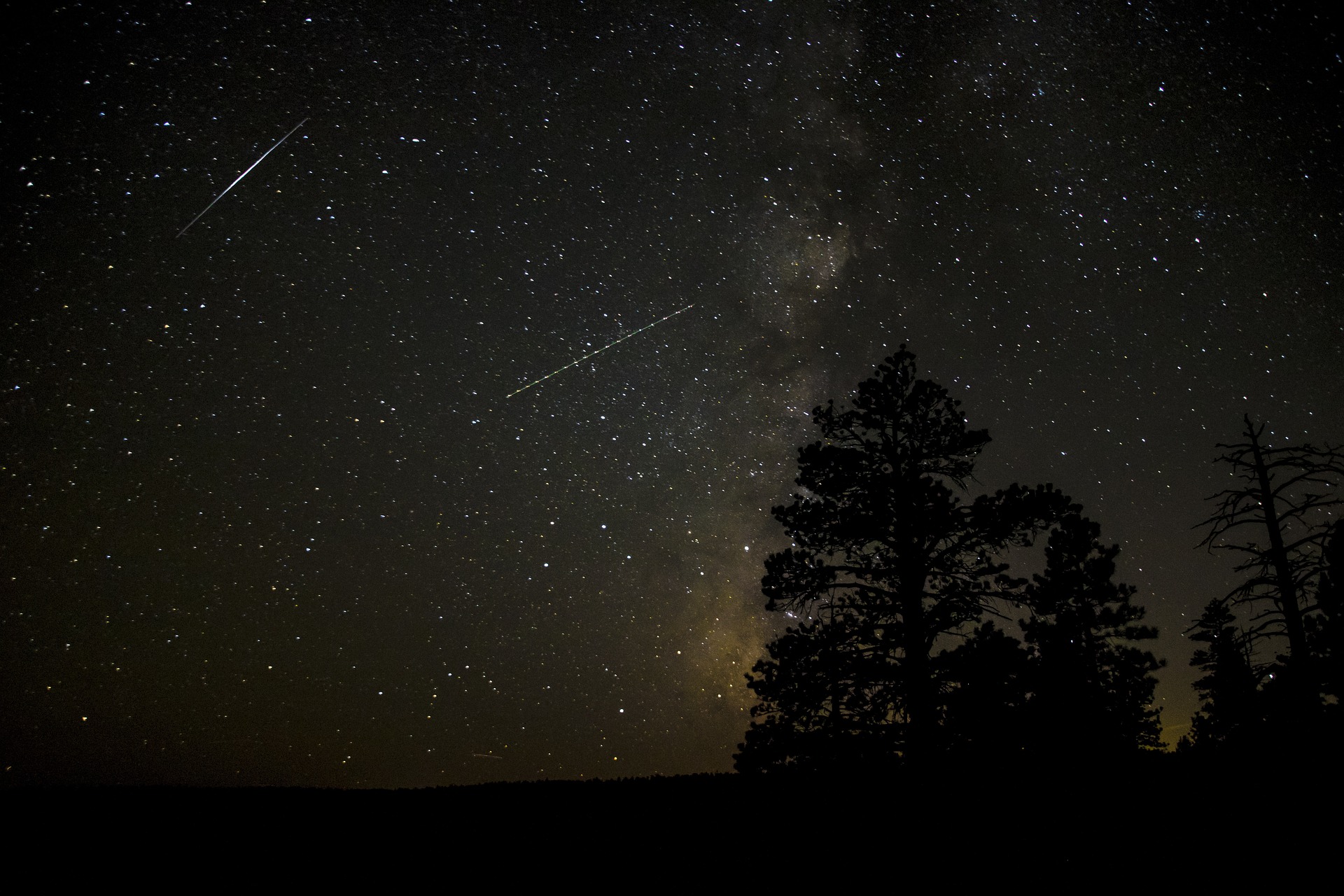Passion of the people – 1.4.4
The perception of stars in a dark landscape
Darkness as a phenomenon is losing its significance with the development of civilization and advanced technology. Since the beginning of the earth, its rotation has always created cyclical darkness, which was one of the factors by which all living beings evolved and developed their instincts and behaviour. The theme was intended for rest, and with the development of civilization, with a view to the sky, it was also intended for the philosophy of understanding one’s place in the universe. The perception of stars in the night landscape was thus not something special, but a natural part of the 24-hour day. Nowadays, however, stargazing in a dark landscape requires a bit more effort.
Nowadays, if we want to observe stars in a dark landscape, we have to work a little harder.
The current reality is that we live in a time when the sky is significantly polluted with artificial light, which results in the stars being less accessible to our eyes than decades ago. Any source of light means a reduction in the visibility of the starry sky. It is precisely for this reason that our ancestors, say 150 years ago, had a much better view of the stars than is possible today in most regions on Earth.
Therefore, for a person to be able to return to his roots, i.e. to the darkness that has been a self-evident phenomenon for him for thousands of years, currently requires a lot of logistics and sometimes also costs. The possibility of stargazing is becoming increasingly rare due to light pollution, because due to the pollution of the atmosphere, the starry sky cannot be seen in all its dimensions. Due to the increasing desire of modern advanced civilization, this issue has started to be solved by the establishment of dark sky parks all over the world. Dark Sky Parks offer an ancient view of the sky and create natural night darkness without any distractions, providing the best conditions for stargazing.
The International Dark Sky Association (IDA) is the association that monitors and certifies suitable destinations from this group. Among their other goals, which are the protection of the environment and the promotion of the natural night environment, is also the promotion of eco and astro tourism. There are currently more than 80 certified Dark Sky Park landscapes around the world, which means that there are more and more destinations where it is possible to observe the stars in all their glory in the natural darkness of the night.



Further resources
Links below will redirect you to external websites. In accordance with the European data protection declarations, we would like to point out that by clicking on these links you may send data to external providers. We cannot prevent that.
Videos
![]() How to focus on stars and Milky Way
How to focus on stars and Milky Way
![]() An In-Depth Exploration of Our Solar System
An In-Depth Exploration of Our Solar System
![]() The Unbearable Beauty of the Night Sky.
The Unbearable Beauty of the Night Sky.
On line resources
![]() Rediscovering the landscapes of the starry sky
Rediscovering the landscapes of the starry sky
![]() A new landscape of the invisible
A new landscape of the invisible
Further readings
![]() Sample lighting management plan for international dark sky parks/reserves/sanctuaries
Sample lighting management plan for international dark sky parks/reserves/sanctuaries
![]() Guidelines for Outdoor Lighting
Guidelines for Outdoor Lighting
![]() International Dark Sky Park Program Guidelines
International Dark Sky Park Program Guidelines
![]() Astro 2020 Science White Paper: Fundamental Cosmology in the Dark Ages with 21-cm Line Fluctuations
Astro 2020 Science White Paper: Fundamental Cosmology in the Dark Ages with 21-cm Line Fluctuations
Teaching Materials
![]() Everything You Need to Know to Take Up Stargazing – A beginner’s guide to stargazing
Everything You Need to Know to Take Up Stargazing – A beginner’s guide to stargazing
![]() Observing “Shooting Stars” by Andrew Fraknoi
Observing “Shooting Stars” by Andrew Fraknoi
![]() The lives of Stars, Andrew Fraknoi
The lives of Stars, Andrew Fraknoi
For Kids
![]() The planet song – 8 Planets of the Solar system Song for Kids
The planet song – 8 Planets of the Solar system Song for Kids
![]() Solar System – online games (3D puzzle)
Solar System – online games (3D puzzle)
![]() E – book for children: A sky full of stars; Turkish and Muslim Astronomers in History
E – book for children: A sky full of stars; Turkish and Muslim Astronomers in History
